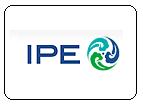On October 8th 2012, five environmental NGOs, Friends of Nature, The Institute of Public & Environmental Affairs (IPE), Green Beagle, Envirofriends and Nanjing Green Stone have jointly released, in Beijing, the Phase II Cleaning up the Fashion Industry Report.

The report highlights serious deficiencies in the environmental management of supply chains in China by a number of large scale apparel brands and it calls on consumers in China, and abroad, to use their voice to push brands to live up to their environmental responsibilities.
In recent years, we have started to see more reports of large scale international brands and retailers moving orders away from China. More and more items of clothing in U.S. and European shopping malls have labels showing that they have been made in countries in Southeast Asia, South Asia and even Africa.
However, when we looked in detail into this problem we found that the decrease in share of textile exports was mainly concentrated in the garment processing sector. In the raw material processing sectors like dyeing and finishing, China still held the major position globally and exports are still rising steadily.
Because China still has many advantages in fabric manufacturing over other textile exporting countries we predict that in the future China will remain the textile material processing and manufacturing factory to the world.
Merely looking at this from an economic perspective China can be seen to have had both losses and gains in this new round of global distribution of labor. However, from the environmental and social perspective, the re-distribution of industries across countries is more worrying. China is losing the labor intensive garment manufacturing cut and sew sector of the textile industry.
This sector was able to provide a large amount of jobs, and what's more, water consumption, energy consumption and pollution discharge were all minimal. The sector of the textile industry that China has retained is the resource intensive dyeing and finishing sector. This sector is not able to provide large amounts of jobs and water consumption, energy consumption and pollution discharge are all very large.
China's current air and water pollution problems are extremely serious, and so to alleviate the harmful effect that this new spread of industrial developments could have on China's environment, the discharge of pollution needs to be strictly controlled.
However, enforcement is not strict and the cost of resources like water is also very low. This means that dyeing and finishing companies commonly skip implementing water or energy savings, make no effort to reduce pollutant discharge and fail to even consistently abide by environmental laws and regulations.
The reduction of pollution discharge from the textile industry has become a focus for society. The central and local governments, as well as the general public and textile industry associations are all working hard to strengthen environmental management and push textile companies to reduce energy consumption and pollution discharge. A large number of apparel brands and retailers have also come out with their own sustainable procurement policies.
However, supply chain environmental management for many brands just reaches to their first tier of suppliers, which is usually just cut and sew factories. For the environmental performance of their most polluting materials suppliers, their understanding has limits and some brands are not even clear who these suppliers are.
Therefore, sustainable apparel has this dangerous blind spot that means that dyeing and finishing enterprises lower their environmental standards in order to win orders, which in turn creates a race to the bottom.
In order to push brands to make green choices, on April 9th, 2012, five environmental NGOs, Friends of Nature, the Institute of Public & Environmental Affairs, Green Beagle, Envirofriends and Nanjing Green Stone jointly published an investigative report titled "Cleaning up the Fashion Industry ".
H&M, Nike, Esquel, Levi's, Adidas, Walmart, Burberry and Gap all proactively followed up and established a regular screening mechanism, actively identified pollution records in their supply chain and pushed more than 200 textile and leather suppliers to make explanations regarding their violation problems and the follow-up actions they have taken. Out of these, Adidas, Nike, Levi's and H&M have already begun to extend management down to dyeing and finishing suppliers.
However, faced with specific questions from environmental NGOs about emissions violation problems in their supply chain, there are still 22 brands, including Marks & Spencer, Disney, J.C. Penney, Polo Ralph Lauren and Tommy Hilfiger that chose the other option and either gave a limited response or no response. Amongst these was the British company Marks & Spencer.
This company has its "Plan A" which has become a sustainable business benchmark for global textile companies and retailers. Through further research we discovered that suspected material suppliers to this company, which claims to be the first brand to be "zero waste," "carbon neutral" and to have established a "cradle to cradle" business model, have actually had a serious impact on local communities and the environment through their pollution discharge.
As a customer of these suppliers, Marks & Spencer, faced with questions from environmental NGOs, has evaded answering these questions and has done as little as possible.
If Marks & Spencer is unwilling to face the pollution problems in their supply chain and deliberately choose to stand on the wrong side, they should let the world know about their choice and not continue to let suppliers pollute the environment and hurt communities whilst using concepts such as "zero waste" and "carbon neutral" to green wash their performance.
Consumers also need to make a choice. We believe that consumers of Marks & Spencer, Disney, J.C. Penney, Polo Ralph Lauren and Tommy Hilfiger products are not willing to accept damage to the environment and communities in order to keep the cost of their fashionable clothes low.
For the sake of the environment and to ensure that we can give our children a safe place to live, we propose that consumers make brands like Marks & Spencer aware of their feelings. Please help us make the brands sit up and listen!




